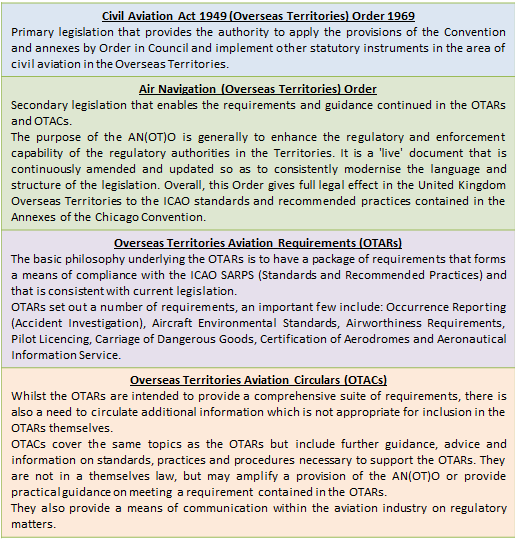Legal Structure
The legal structure of civil aviation regulation is deeply rooted in post-war history. 'The Convention on International Civil Aviation' (which is also known as 'The Chicago Convention') was signed on December 7th, 1944. This document established the International Civil Aviation Organisation (ICAO), which is a specialised agency of the United Nations. The Convention has been revised eight times since it's initial signing; as of 2013, the Chicago Convention has 191 state parties.
From the Chicago Convention came the Civil Aviation Acts (1949-1982), which eventually lead to the Air Navigation (Overseas Territories) Order (AN(OT)O). Air Safety Support International (ASSI) is the body corporate which is responsible for auditing aviation safety regulation in each Overseas Territory, and to produce OTARs (Overseas Territories Aviation Requirements) which are the requirements by which Overseas Territories operate.
The OTARS and OTACS (Overseas Territories Aviation Circular) describe the means by which aircraft operators, aviation personnel and providers of services can gain approvals, licenses and certificates. These processes ensure that adequate levels of safety and internationally agreed standards are met.
Below is a table that summarises the United Kingdom and Overseas Territories legal structure concerning civil aviation:

